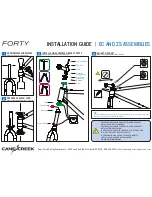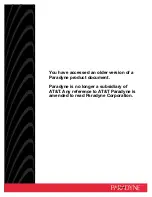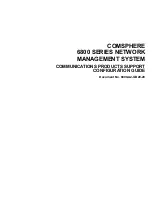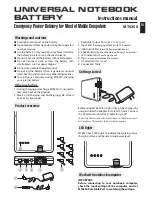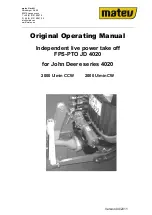
Maintenance and cleaning
Do not use abrasive cleaning agents, cleaning alcohol or other chemical solutions, since
these could damage the casing or even impair operation.
• Before you start cleaning the product, disconnect it from the voltage supply and from the connected con-
sumer load.
• Never submerge the product in water.
• The product contains no parts that require servicing. Therefore, do not open/dismantle it.
• To clean the product, a clean, dry and soft cloth is sufficient. Do not press on the casing too strongly as this
may cause scratch marks.
• Dust can easily be removed using a clean, long-haired and soft brush and a vacuum cleaner.
Disposal
a) Product
Electronic devices are recyclable material and do not belong with household waste.
Please dispose of the product,when it is no longer in use, according to the current statutory
requirements.
Remove any inserted batteries/rechargeable batteries and dispose of them separately from the
product.
b) Batteries / rechargeable batteries
As the end user, you are required by law (Battery Ordinance) to return all spent batteries/rechargeable bat-
teries; disposal of them with household waste is prohibited.
Batteries/rechargeable batteries are labelled with the symbol shown to indicate that disposal
with household waste is forbidden. The symbols of the relevant heavy metals are:
Cd=cadmium, Hg=mercury, Pb=lead (the marking can be seen on the battery/rechargeable
battery, e.g. underneath the refuse bin symbol shown on the left).
You can return used batteries/rechargeable batteries free of charge at the official collection points in your
municipality, our stores, or wherever batteries/rechargeable batteries are sold.
In so doing you will fulfil your statutory obligations and contribute to the protection of the environment.
Declaration of conformity (DOC)
We, Conrad Electronic SE, Klaus-Conrad-Straße 1, D-92240 Hirschau, hereby declare that this product
conforms with the fundamental requirements and other relevant regulations of the directive 1999/5/EC.
You can find the declaration of conformity for this product at www.conrad.com.
Technical data
a) Radio-controlled switch socket
Operating voltage .................................230 V/AC, 50 Hz
Power output ........................................Resistive load: max. 2000 W (8.7 A)
..............................................................
Motor load: max. 460 W (2 A)
Frequency .............................................433.92 MHz
Memory spaces ....................................8
Operating conditions .............................0 to +35 ºC, 10 – 90% relative air humidity, non-condensing
Storage conditions ................................0 to +45 ºC, 10 – 90% relative air humidity, non-condensing
Dimensions (W x H x D) .......................60 x 84 x 73 mm
Weight ..................................................approx. 100 g
Pollution degree ....................................2
Rated impulse withstand voltage ..........2500 V
Duty-type ..............................................S1
Type and/or connection of switch .........Single pole, single load
Number of operating cycles ..................10000
Level .....................................................3
PTI (V) ..................................................175
Level of glow-wire test ..........................max. 850 °C
Not requiring forced cooling
Thermal link ..........................................
at control circuit: K18/86 °C 2 A 250 V~;
..............................................................
at main circuit: BF104X/104 °C 16 A 250 V~
b) Remote control
Battery type ..........................................CR2032
Number of channels .............................12
Frequency .............................................433.92 MHz
Range ...................................................
30 m (free field)
Operating conditions .............................0 to +35 ºC, 10 – 90% relative air humidity, non-condensing
Storage conditions ................................0 to +45 ºC, 10 – 90% relative air humidity, non-condensing
Dimensions (W x H x D) .......................35 x 15 x 95 mm
Weight ..................................................approx. 30 g
Programming
1. Set the desired switch group (I, II, III or IV) on the remote control using the switch group selector switch (6).
2. Plug the radio-controlled switch socket into a common household mains socket. Make sure that the
radio-controlled switch socket is switched off. The on/off switch (2) must not light up.
3. Hold down the on/off switch on the radio-controlled switch socket until it starts to flash.
4. Press the operating key (5) of the desired channel on the left side of the remote control.
5. The on/off switch lights up permanently. The programming process has been completed successfully.
You may also use the keys on the right side of the remote control for programming. In this case,
the light in the on/off switch goes out.
6. Proceed as described above to assign the other channels.
A radio-controlled switch socket features 8 memory spaces for different channels or remote
controls.
The remote control can control an unlimited number of compatible radio-controlled switch sockets.
Resetting the channel assignment
a) All channels
1. Hold down the on/off switch (2) on the radio-controlled switch socket until it starts to flash.
2. Release the on/off switch briefly, and then push and hold it down again until it goes out.
3. The radio-controlled switch socket is now reset to factory settings.
b) Individual channels
1. Set the desired switch group (I, II, III or IV) on the remote control using the switch group selector switch
(6).
2. Hold down the on/off switch (2) on the radio-controlled switch socket until it starts to flash.
3. On the remote control, press the operating key (5) of the channel that you wish to reset. During this
process, it is not important whether you press the key of the left or right column.
4. The light of the on/off switch goes out. The assignment of the selected channels has been reset suc-
cessfully.
Function test
1.
Set the desired switch group (I, II, III or IV) on the remote control using the switch group selector switch (6).
2. Plug the radio-controlled switch socket into a common household mains socket.
3. Press the respective operating key (5) on the left side of the remote control. The on/off switch (2) on the
radio-controlled switch socket lights up. The radio-controlled switch socket has therefore been activated.
4. To deactivate the radio-controlled switch socket, press the respective operating key on the right side of
the remote control. The light of the on/off switch on the radio-controlled switch socket goes out.
Commissioning
The power consumption of the connected electrical consumer load must not exceed
2000 W/8.7 A (resistive load) or 460 W/2 A (motor load). In the event of an overload, the
internal thermal fuse of the radio-controlled switch socket will trip. The thermal fuse is
not self-resetting. Should this happen, the radio-controlled switch socket can no longer
be put into operation.
To ensure proper functioning, the distance between two radio-controlled switch sockets
should be at least 1 m.
1. Plug the radio-controlled switch socket into a common household mains socket. Make sure that the
radio-controlled switch socket is switched off. The on/off switch (2) must not light up.
2. Switch off the electrical consumer load that you wish to operate via the radio-controlled switch socket,
using its mains switch.
3. Connect the mains plug of the electrical consumer load to the radio-controlled switch socket.
4. Switch the electrical consumer load on using its mains switch.
5. Now switch the electrical consumer load on and off using the remote control. To this end, please refer to
the chapter “Description of the keys (remote control)”.
You can switch the electrical consumer load on/off manually via the on/off switch (2) on the radio-
controlled switch socket.
Range
• The transmission range of the radio signal, between the remote control and a radio-controlled switch
socket, is up to 30 m under optimum conditions.
This value, however, is the range when the transmitter and receiver are visible to each other,
without disrupting the power.
In practice, however, there are walls, rooms, ceilings etc. between the transmitter and the re-
ceiver, which reduce the range accordingly.
Due to the different influences on the radio transmission, no specific range can be guaranteed.
However, trouble-free operation is usually possible in a single family house.
• The range can be reduced due to:
- Walls, reinforced concrete ceilings
- Coated or vapour-deposited insulating glass panes
- Proximity to metallic and conductive objects (e.g. heating elements)
- Proximity to human bodies
- Broadband interferences, e.g. in residential areas (DECT telephones, mobile phones, radio-controlled
headphones, radio-controlled speakers, radio-controlled weather stations, baby surveillance systems
etc.)
- Proximity to electric motors, transformers, power supply units, computers
- Proximity to improperly shielded or uncovered operating computers or other electrical devices
This is a publication by Conrad Electronic SE, Klaus-Conrad-Str. 1, D-92240 Hirschau
(www.conrad.com).
All rights including translation reserved. Reproduction by any method, e.g. photocopy, microfilming,
or the capture in electronic data processing systems require the prior written approval by the editor.
Reprinting, also in part, is prohibited. This publication represent the technical status at the time of
printing.
© Copyright 2015 by Conrad Electronic SE.
V4_0615_02_JH









